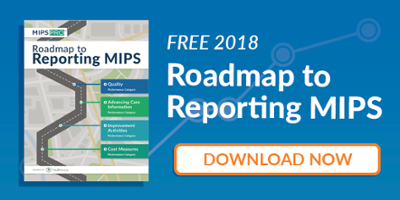To avoid the penalty, an eligible clinician or group only has to submit the minimum amount of data for one out of the three performance categories. The performance threshold for the MIPS score (the minimum number of points required to avoid the penalty) is three points, which are easy to achieve in each performance category.
RELATED: The Absolute Minimum Required For MIPS Success
Submitting no data at all in 2017 will result in a 4% reimbursement penalty in 2019, so reporting at least the bare minimum is clearly good sense. But this week, we’re making the case that despite the learning curve, you should seriously consider embracing MIPS more fully, and reporting more than just the minimum.
The longer you put it off, the harder it will be.
Doing the bare minimum may seem like a temporary escape from the frustrations of fully embracing MIPS, but clinicians and groups planning for long-term success must instead treat these transition years as an opportunity to test internal workflows for reporting efficiency.
The 2018 performance year is also designed to allow for some leniency during transition, but it will be far less easy than the current performance year. The percentage of patients you will be required to report on for success will be slowly ramping up to reach 90% of all payers. The performance threshold will be 15 points instead of 3. The MIPS payment adjustment will increase. In years beyond 2018, the stakes will only continue to grow.
Those who report only the minimum in 2017 will not be penalized in 2019, but those who report more will be able to adjust workflows before reporting requirements become more intensive and risks increase. This will give them a valuable long-term advantage over peers who choose to procrastinate.
The Specter of Physician Compare
Perhaps, by itself, the direct financial impact of failing to prepare is insufficient motivation to participate beyond the minimum. But consider the less direct, yet perhaps more treacherous, effect on your Physician Compare score.
An assortment of MIPS data points will be published on the Physician Compare website, including your MIPS final score. This means that your score (and the scores of your peers) will be available to patients and anyone else who wants to search for the information. If your score is low due to reporting only the minimum, patients won’t have the context necessary to tell the difference between your score and that of a doctor with below-average outcomes.
As we have outlined in a previous blog post, this score follows physicians even when they switch organizations. This means that your score could continue to make a difference in your bottom line, even years down the road, if you neglect to make sure your reporting reflects the high quality of your work.
Both to set you up for success in coming years, and to ensure that your reputation accurately reflects the quality care you are providing, we highly recommend that you shoot for above a minimum score. This goal may seem daunting, but there is hope: we have an entire (free!) MIPS Learning Center dedicated to answering your most common questions about the program, as well as a ton of educational resources to give you the information you need at every step. And for even more help reporting, check out MIPSPRO, which makes it easy to navigate complicated Medicare requirements and maximize your MIPS incentive. Our quality reporting team guides you through the MIPS reporting process, while our comprehensive, user friendly platform gives you real-time feedback on your MIPS performance.



